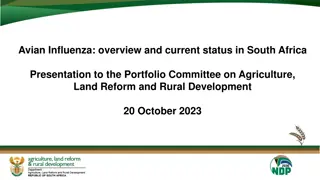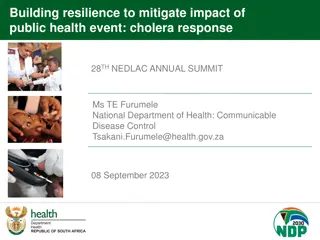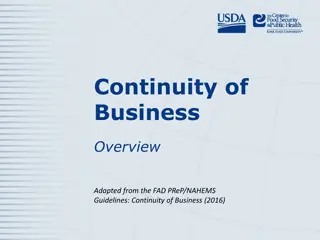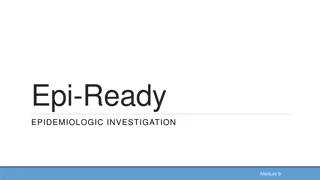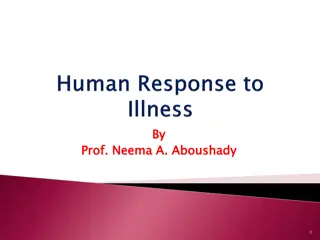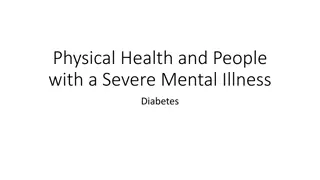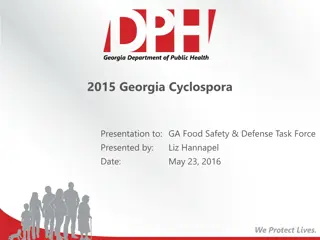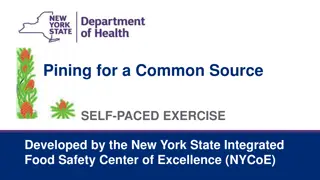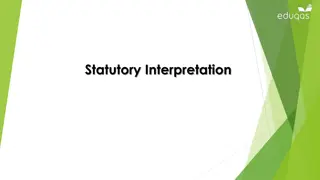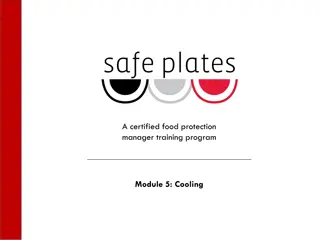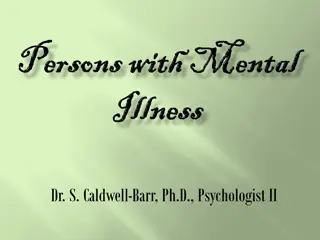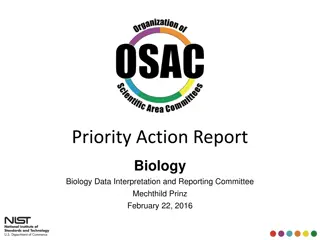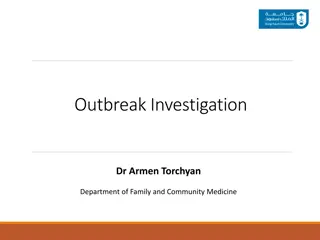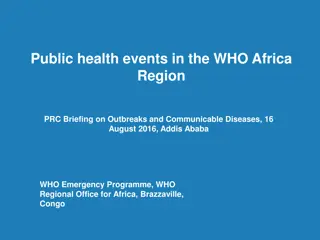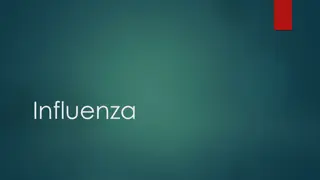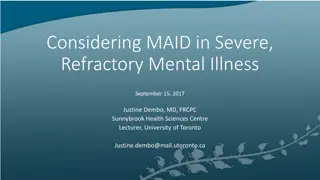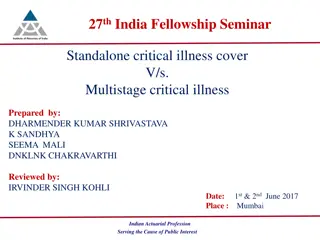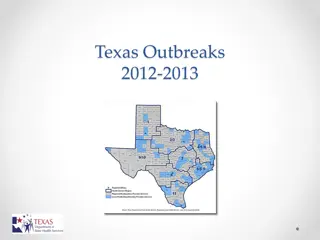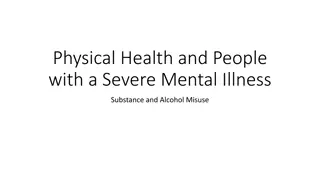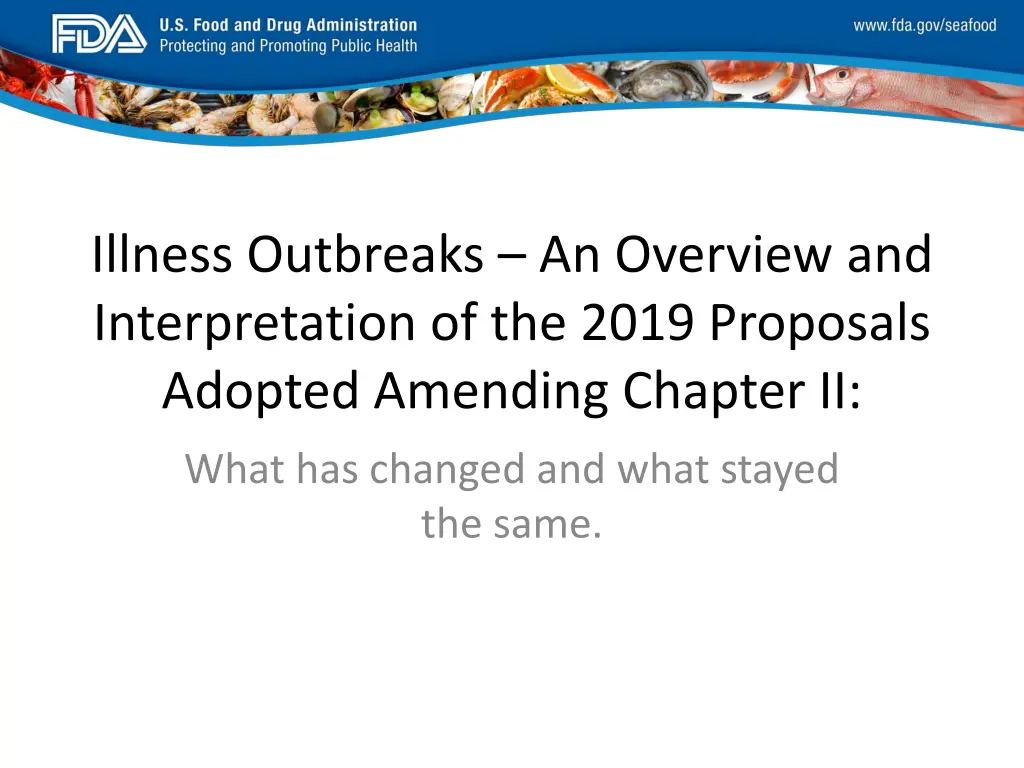
Seafood Illness Outbreaks Overview
Explore the 2019 proposals amending Chapter II related to seafood illness outbreaks, including clarification of ambiguities and responses to multisource outbreaks. Learn about the risk assessment and management involved in investigating shellfish-related illnesses under the NSSP, addressing bacterial and viral pathogens, biotoxins, and more.
Download Presentation

Please find below an Image/Link to download the presentation.
The content on the website is provided AS IS for your information and personal use only. It may not be sold, licensed, or shared on other websites without obtaining consent from the author. If you encounter any issues during the download, it is possible that the publisher has removed the file from their server.
You are allowed to download the files provided on this website for personal or commercial use, subject to the condition that they are used lawfully. All files are the property of their respective owners.
The content on the website is provided AS IS for your information and personal use only. It may not be sold, licensed, or shared on other websites without obtaining consent from the author.
E N D
Presentation Transcript
FDA_Swish_SeafoodXXX.png Illness Outbreaks An Overview and Interpretation of the 2019 Proposals Adopted Amending Chapter II: What has changed and what stayed the same.
FDA_Swish_SeafoodXXX.png Why was this topic selected? In 2018 ISSC Executive Board appointed the Illness Outbreak Guidance Committee Charge: Modify Chapter II to address ambiguities and if necessary submit proposals to change the language Submitted proposals 19-208, 19-209 and 19-210 to Task Force II at the 2019 Biennial Meeting ISSC Training Committee requested topics and an overview of changes to Chapter II was selected
FDA_Swish_SeafoodXXX.png Training Objectives Highlight changes to Illness investigation and reporting under the NSSP Offer a framework to understand the implementation of Chapter II. @.01 A. for State Shellfish Authorities Industry Provide information on how FDA will evaluate illness response based on changes to Chapter II during program evaluations
FDA_Swish_SeafoodXXX.png Illness investigation and reporting under the NSSP Fecal waste from warm blooded animals (infections): Bacterial pathogens: Typhoid, Salmonellosis, Cholera* Viral pathogens (human waste): Norovirus, Hepatitis A Naturally occurring bacteria in estuarine waters (infections) Vibrio spp. Phytoplankton blooms (intoxications) Biotoxins: Paralytic Shellfish Poisoning (PSP), Amnesic Shellfish Poisoning (ASP), Diarrheic Shellfish Poisoning (DSP), Neurotoxic Shellfish Poisoning (NSP)
FDA_Swish_SeafoodXXX.png Proposals Submitted by the Illness Outbreak Guidance Committee Proposal 19-209 Clarify and remove ambiguity in Chapter II @ 01 Proposal 19-209 Clarify and remove ambiguity in Chapter II @ 02 Proposal 19-210 Address response to multisource outbreaks
FDA_Swish_SeafoodXXX.png Chapter II. Risk Assessment and Risk Management @.01 Outbreaks of Shellfish-Related Illness. A. When shellfish are implicated in an illness outbreak involving two (2) or more persons not from the same household (or one (1) or more persons in the case of shellfish toxicity poisoning associated with marine biotoxins), the determination of whether an epidemiological association exists between the illness and the shellfish consumption will be made by the state or local epidemiologist in the state in which the outbreak occurs. The determination will be made by reviewing: (1) Food history; (2) Whether the disease has the potential or is known to be transmitted by shellfish; and (3) Whether the symptoms and incubation period of the illnesses are consistent with the suspected etiologic agent.
FDA_Swish_SeafoodXXX.png Chapter II. Risk Assessment and Risk Management @.01 Outbreaks of Shellfish-Related Illness. B. When the state or local epidemiologist in the state in which the outbreak occurs Authority has determined an epidemiological association between an illness outbreak meeting the definition of the NSSP and shellfish consumption, the appropriate Authority Authorities shall: (1) Notify the FDA Shellfish Specialist that a shellfish related outbreak has occurred. (2) Conduct an investigation of the illness outbreak w Within twenty-four (24) hours determine whether the illness is growing area related or is the result of post-harvest contamination, mishandling, or illegal harvesting from a closed area. The determination of post-harvest contamination may involve multiple authorities in multiple states. The determination of the illness being growing area related will be conducted by the source state.
FDA_Swish_SeafoodXXX.png C. When the Authorities determine that the outbreak is not the result investigation outlined in Model Ordinance Chapter II. @.04 B. does not indicate a post-harvest contamination problem, or illegal harvesting from a closed area, the Authority shall: (1) Immediately place the implicated portion(s) of the harvest area(s) in the closed status; (2) Notify the ISSC and the FDA Shellfish Specialist that a potential health risk is associated with shellfish harvested from the implicated growing area; (3) Promptly initiate recall procedures consistent with the Recall Enforcement Policy, Title 21 CFR Part 7, when a recall is deemed appropriate by the Authority. The recall shall include all implicated products. (4) Transmit to the ISSC and FDA information identifying the dealers shipping the implicated shellfish. (5) The ISSC will notify States and FDA Shellfish Specialists of growing area closures and recalls. In the case of recalls, ISSC will notify States with information identifying dealers shipping the implicated shellfish. Closure and recall notices (not to include dealers) will be posted on the ISSC website. ISSC will maintain an inventory of closure and recall information.
FDA_Swish_SeafoodXXX.png D. When the appropriate Authorities determine investigation outlined in Model Ordinance Chapter II. @.04 B. demonstrates that the illnesses are related to post- harvesting contamination or mishandling, growing area closure is not required. However, the Authority in the state where the post- harvest contamination, mishandling or illegal harvesting from a closed area shall: (1) Notify the ISSC and the FDA Shellfish Specialist of the problem; and (2) Initiate a voluntary recall by firms. If a firm or firms is requested by the Authority to recall, the firm will use Promptly initiate recall procedures consistent with the Recall Enforcement Policy, Title 21 CFR Part 7 when a recall is deemed appropriate by the Authority. The recall shall include all implicated products. (3) Transmit to the ISSC and FDA information identifying the dealers shipping the implicated shellfish. (4) The ISSC will notify States and FDA Shellfish Specialists of growing area closures and recalls. In the case of recalls, ISSC will notify States with information identifying dealers shipping the implicated shellfish. Closure and recall notices (not to include dealers) will be posted on the ISSC website. ISSC will maintain an inventory of closure and recall information.
FDA_Swish_SeafoodXXX.png E. When the Authority can not complete the determination outlined in Chapter II @.01 B within 24 hours, the Authority in the source state shall: (1) Immediately place the implicated portion(s) of the harvest area(s) in a precautionary closed status. Should the Authorities later determine that the illnesses are related to post harvest contamination, or mishandling, or harvesting from a closed area, the suspected growing area can be reopened. (2) Promptly initiate recall procedures consistent with the Recall Enforcement Policy, Title 21 CFR Part 7, when a recall is deemed appropriate by the Authority. The recall shall include all implicated products Promptly initiate recall procedures consistent with the Recall Enforcement Policy, Title 21 CFR Part 7, when the authority deems appropriate. (3) (2) Promptly initiate recall procedures consistent with the Recall Enforcement Policy, Title 21 CFR Part 7, when the authority can document a rationale that a recall would be effective.
FDA_Swish_SeafoodXXX.png Chapter II. Risk Assessment and Risk Management @.01 Outbreaks of Shellfish-Related Illness. G. F. Upon closing an implicated portion(s) of the harvest area(s) for naturally occurring pathogens and/or biotoxins, the Authority: (1) Shall follow an existing marine biotoxin contingency/management plan, if appropriate. (2) Shall collect and analyze samples relevant to the investigation, if appropriate. (3) Shall keep the area closed until it has been determined that levels of naturally occurring pathogens and/or biotoxins are not a public health concern. (4) May limit the closure to specific shellfish species when FDA concurs that the threat of illness is species specific.
FDA_Swish_SeafoodXXX.png H.G. When the growing area is determined the problem, the Authority shall: (1) Place the growing area in the closed status until: (a) The Authority verifies that the area is properly classified by conducting a review of the growing area to include: (i) current data, in compliance with the NSSP Model Ordinance; (ii)A field review of existing pollution sources; (iii) A review of actual and potential intermittent pollution sources, such as vessel waste discharge and wastewater discharge from treatment plant collection systems. If the review indicates that a previously unknown pollution source exists, the area shall be reclassified. If the a previously unknown pollution source can be corrected, the closure period should shall be extended to allow for natural depuration following correction of the pollution source; and (iv) Examination of water quality subsequent to the illness outbreak. (b) It has been determined that the event which caused the contamination no longer exists and sufficient time has elapsed for natural depuration; (2) Keep the area closed for a minimum of 21 days if the illness is consistent with viral etiology; and (3) Develop a written report summarizing the findings of the investigation and actions taken.
FDA_Swish_SeafoodXXX.png Chapter II. Risk Assessment and Risk Management @.01 Outbreaks of Shellfish-Related Illness. Section H and I have not been altered. H. Discusses responsibilities of recalls I. Discusses molluscan shellfish products that have recalled as a result of an illness outbreak associated with V.v. or V.p. and are being reconditioned or resubmerged. Task Force II requested the development of a decision tree reflecting the requirements of 19-208 to be presented at the Spring 2020 Board Meeting.
FDA_Swish_SeafoodXXX.png @.02 Shellfish Related Illnesses Associated with Vibrio parahaemolyticus (V.p.) A. When the investigation outlined in Section @.01 A. indicates the illness(es) are associated with the naturally occurring pathogen Vibrio parahaemolyticus (V.p.), the Authority shall determine the number of laboratory confirmed cases epidemiologically associated with the implicated area. States will not be expected to close growing areas based on V.p. cases that are reported more than sixty (60) days after harvest or when environmental parameters have changed or monitoring indicates the V.p. risk is reduced. and a Actions taken by the Authority will be based on the number of cases and the span of time as follows.
FDA_Swish_SeafoodXXX.png @.02 Shellfish Related Illnesses Associated with Vibrio parahaemolyticus (V.p.) (4) When the number of cases and the span of time reach the thresholds outlined above, prior to implementing the controls above, the Authority shall conduct an investigation of the illnesses within seventy-two (72) hours of reaching any one of the thresholds of Chapter II @.02 . 1, 2 or 3 to determine whether the illness is growing area related or is the result of post- harvest contamination abuse or mishandling such as time temperature abuse. (a) If the conditions in Chapter II @.02 (2) or (3) are met and the investigation cannot be completed within 72 hours, immediately place the implicated portion(s) of the harvest area(s) in a precautionary closed status. (b) Should the Authority later determine that the illnesses are related to post harvest abuse or mishandling the implicated harvest area(s) can be immediately reopened.
FDA_Swish_SeafoodXXX.png @.02 Shellfish Related Illnesses Associated with Vibrio parahaemolyticus (V.p.) (5) When the investigation outlined in Model Ordinance Chapter II. @.02 A.4. demonstrates that the illnesses are related to post- harvesting contamination or mishandling, growing area closure is not required. However, the Authority shall: (a) Notify the ISSC and the FDA Shellfish Specialist of the problem; and (b) Determine the appropriateness of initiating a voluntary recall by firms. If a firm or firms is requested by the Authority to recall, the firm will use procedures consistent with the Recall Enforcement Policy, Title 21CFR Part 7. The recall shall include all implicated products.
FDA_Swish_SeafoodXXX.png Cont (c) Transmit to the ISSC and FDA information identifying the dealers shipping the implicated shellfish; Should closures and recalls be necessary the ISSC will notify States and FDA Shellfish Specialists of growing area closures and recalls. In the case of recalls, ISSC will notify States with information identifying dealers shipping the implicated shellfish. Closure and recall notices (not to include dealers) will be posted on the ISSC website. ISSC will maintain an inventory of closure and recall information.
FDA_Swish_SeafoodXXX.png (6) When the investigation outlined in Model Ordinance Chapter II. @.02 A.4. does not indicate a post-harvest contamination problem, or illegal harvesting from a closed area, the Authority shall: (a) Follow the procedures outlined in Chapter II @.02 A. 1, 2 and 3. (b) Immediately place the implicated portion(s) of the harvest area(s) in the closed status; (c) (b)Notify the ISSC and the FDA Shellfish Specialist that a potential health risk is associated with shellfish harvested from the implicated growing area; (d) (c)Promptly initiate recall procedures consistent with the Recall Enforcement Policy, Title 21 CFR Part 7. The recall shall include all implicated products. If a recall is required by Chapter II @.02 A. 3.
FDA_Swish_SeafoodXXX.png CONT: (6) When the investigation outlined in Model Ordinance Chapter II. @.02 A.4. does not indicate a post-harvest contamination problem, or illegal harvesting from a closed area, the Authority shall: a-c i. Transmit to the ISSC and FDA information identifying the dealers shipping the implicated shellfish. ii. The ISSC will notify States and FDA Shellfish Specialists of growing area closures and recalls. In the case of recalls, ISSC will notify States with information identifying dealers shipping the implicated shellfish. Closure and recall notices (not to include dealers) will be posted on the ISSC website. ISSC will maintain an inventory of closure and recall information.
FDA_Swish_SeafoodXXX.png (7) When the State Authority investigating the laboratory confirmed V.p. cases does not provide information to identify a single growing area and multiple growing areas are implicated, the State Authorities in the states with implicated growing areas shall evaluate to determine if the illness should be attributed to the implicated area(s). Evaluations may include but are not limited to: (a) Vibrio levels in the growing area around the time and date of harvest (b) Comparison of other single source illnesses attributed to a growing area(s) involved in a multiple source outbreak. The purpose of this comparison would be to determine if a common growing area can be identified. (c) Environmental conditions which could increase the risk of V.p. at the time of harvest. This could include conditions such as water temperature, air temperature and tidal stage. (d) Genetic typing of clinical isolets the implicates a common growing area or rules out implicated growing areas
FDA_Swish_SeafoodXXX.png (8) If the conditions evaluation in (7) provides sufficient information to implicate a single area, identify higher risk for Vibrio parahaemolyticus then the Shellfish Authority shall take actions outlined in A, above.
FDA_Swish_SeafoodXXX.png 19-210 @.01 Outbreaks of Shellfish-Related Illness C. When the post-harvest contamination investigation involving multiple sources (either harvesters/processors or growing areas) does not indicate post-harvest contamination problem or illegal harvesting from a closed area the Authorities in the source states shall immediately place the implicated portion(s) of the harvest area(s) in a precautionary closure. A specific growing area placed in a precautionary closed status under this section can be immediately re-opened when one or more of the following conditions are met:
FDA_Swish_SeafoodXXX.png 19-210 @.01 Outbreaks of Shellfish-Related Illness (1) When the investigation, conducted in consultation with epidemiologist(s) in the state(s) in which the outbreak occurs, determines that the shellfish which caused the outbreak did not come from one or more of the implicated growing areas in question based on consumption data provided by victims or other relevant data provided by state investigators. This would include an additional illness(es) that matches one or more of the implicated areas and allows for a more precise identification of the growing area(s) which caused the outbreak.
FDA_Swish_SeafoodXXX.png 19-210 @.01 Outbreaks of Shellfish-Related Illness (2) When an investigation, in accordance with Chapter @ .01 H, of an implicated growing area identifies an actual or potential pollution source(s) in a specific growing area and no source(s) are identified in other implicated growing areas, the precautionary closures in other implicated growing areas can be reopened. The reopening can only occur in a growing area after the investigation referenced above does not indicate an actual or potential pollution sources that could be the cause of the outbreak. II
FDA_Swish_SeafoodXXX.png 19-210 @.01 Outbreaks of Shellfish-Related Illness (3) When the investigation, conducted in consultation with the epidemiologists in the state(s) in which the illnesses occur and the Authorities in the state from which the shellfish were harvested, provides information that may include but shall not be limited to: a) Volume or distribution information which would implicate a specific growing area; b) Illness reporting from immediately adjacent growing areas; c) Pollution source investigation in conjunction with growing area evaluation does not identify a pollution source. d) Epidemiological tools that would link cases based on genetic similarity.
FDA_Swish_SeafoodXXX.png 19-210 @.01 Outbreaks of Shellfish-Related Illness D. When precautionary closures are established to address an illness outbreak involving multiple sources, Authorities will not be required to initiate voluntary recalls until the investigations indicate a single source.
FDA_Swish_SeafoodXXX.png While Some Things Changed, Some Stayed the Same Still 24 hours to determine whether the illness is GA related or what to do if the illnesses are result of post- harvest contamination or mishandling for all pathogens other than Vp Still need to conduct investigations Still need to take action to prevent further illness if harvest area is implicated Still need to conduct accurate traceback, especially if multisource
FDA_Swish_SeafoodXXX.png While Some Things Changed, Some Stayed the Same We have an outbreak now what? TRACEBACK! What can we do to make this go as smoothly as possible? Pitfalls during traceback investigations: Tags: what can we do without tags? Dates Commingling Can we meet the existing timelines and if so what do we need to do to better facilitate the goal of protecting public health?
FDA_Swish_SeafoodXXX.png While Some Things Changed, Some Stayed the Same Still need to notify ISSC and FDA Shellfish Specialist of potential health risk ASAP Still need to communicate
FDA_Swish_SeafoodXXX.png FDA State Program Element Review Requirements under Chapter II will still be evaluated during the Plant Processing and Shipping, Vibrio Risk Management Plan/Implementation and Growing Area Classification Program Element Evaluations
FDA_Swish_SeafoodXXX.png FDA State Program Element Review Plant Processing and Shipping Chapter II @ 01 Vibrio Risk Management Plan/Implementation Chapter II @ 02, 03, 06 & 07 Growing Area Classification Chapter II @ 01
FDA_Swish_SeafoodXXX.png FDA State Program Element Review Two Other MO sections will related to shellfish borne illness will also be evaluated under these elements Chapter I @ 01 (F) Epidemiologically Implicated Outbreaks of Shellfish-Related Illness (P&S, VRM, GA) Chapter X @ 03 (B) Recalls (adopt and follow written recall procedures) (P&S)
FDA_Swish_SeafoodXXX.png FDA State Program Element Review Records and Documents Written procedures for investigating shellfish- borne illness Written recall procedure Illness reports Notifications Recall records Vv and Vp risk management plans; assessments Traceback
FDA_Swish_SeafoodXXX.png Questions? melissa.farrell@fda.hhs.gov

